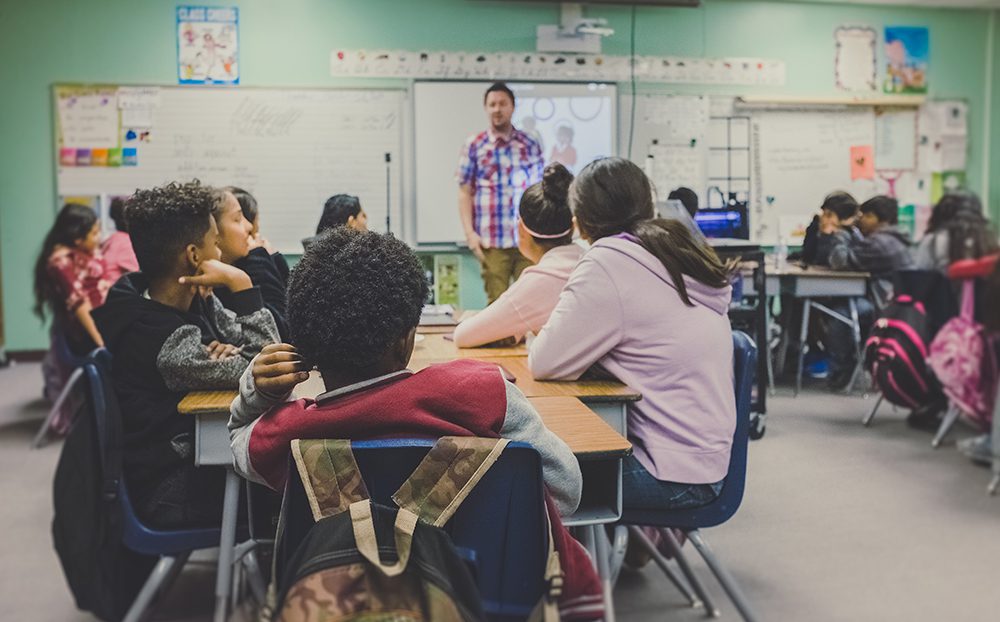Technology vs Teachers: Can technology replace teachers?
The debate
Over the last decade, the number of people taking online courses and therefore using technology as a tool to enhance their education has increased dramatically. You can now master a foreign language or complete a whole degree without leaving the comfort of your sofa. You can decide not only when you want to learn but also how you want to learn. Meanwhile, the range of technology used inside the classroom has also boomed, with the rise of smartboards, digital textbooks and, most notably, the tools offered on the Internet. But what does this continuing growth in education technology mean for teachers?

While many teachers are excited by technology and interested in the ways in which they can use it to enhance their teaching, others are concerned by its rapid development and wonder whether they themselves could eventually be replaced. At Kognity, this is a question we are frequently asked and recently one of my colleagues brought to my attention an article in the Guardian about just that: Can technology replace teachers? As an employee of an “Edtech” company, I often think about this question, and reading the Guardian article made me reflect on my own teaching experiences and wonder whether teaching and technology are mutually exclusive.
What does technology do for us?
Walking into a classroom in Thailand for the first time with 50 students staring at me while I realised I only had myself and a chalkboard to keep them engaged was intimidating. Think about having no access to a computer, no videos, no projector, not being able to make copies, having to enter all your students grades by hand … The list goes on. In a geography lesson, we can now transport students to explore another country via Google Street View, while in an English class we can take them back in time to experience Shakespeare’s plays as they were performed during his lifetime thanks to YouTube. Students are able to watch videos at home that explain how to use algebra or allow them to see first-hand the life cycle of a plant. Technology doesn’t discriminate based on a student’s ability or skill, but instead provides an opportunity to engage students using a medium that they recognise. Lest we forget, technology is growing not just within our classrooms but also in our everyday lives, so it is therefore natural that we should increasingly incorporate it into classrooms.

Great technology requires great teachers!
Crucially, as the Guardian article points out, the use of technology in the classroom doesn’t lessen the need for great teachers. In fact, it is great teachers who make using technology so significant in students’ education. Whilst technology is able to take on a whole host of tasks, it does have its shortcomings – most prominently its inability to interact with humans. Technology can therefore facilitate the learning process but it cannot replace the role of the teacher. As Vivienne Collinson points out in a study for the College of Education at Michigan State University, “Computers do not teach children to question, to discriminate among sources of information, to weigh perspectives, to think about consequences, to bring contextual meaning to a situation, to be creative, or to make careful judgments.” Teachers impart students with life skills, valuable life lessons and inspire them to reach their potential. A teacher is so much more than a facilitator: they are also a guide and a mentor. Without a great teacher, technology merely becomes an automated tool and stops inspiring and engaging students. Ultimately, it isn’t about teachers being replaced by technology but how teachers can adapt to incorporate technology in their lessons.
The question of whether technology will replace teachers is an age-old debate and one that is likely to continue as technology evolves further. In the same way that the calculator didn’t replace maths teachers, technology will continue aiding teachers to educate well-rounded and engaged students. At Kognity, we realise that promoting the use of technology in the classroom is only possible by coordinating effectively with teachers. As our CEO, Hugo Wernhoff, notes, “We’re not only in it to offer flexibility in time and place for students, or lower costs for providers. Our main ambition is instead to deliver better learning.” Technology can only assist in delivering better learning when it is used by a great teacher. Teachers’ roles within the classroom will inevitably change as the resources at their disposal develop. However, as many before have noted, students will always benefit from the guidance and instruction from a teacher at the front of a classroom.

Blog articles

